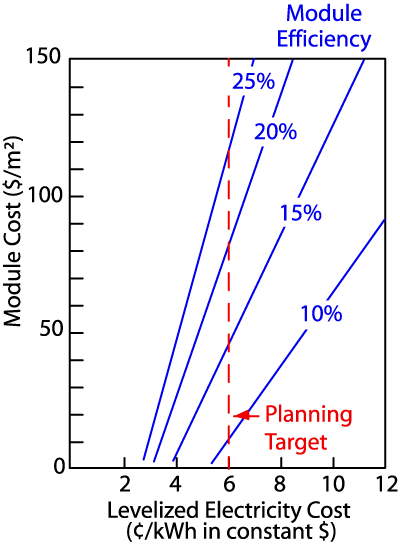Under laboratory conditions and with current state-of-the-art technology, it is possible to produce single crystal silicon solar cells close to 25% efficient. Commercially mass produced cells may be closer to 20% efficient. The overriding reason for this difference in efficiency is that the research techniques used in the laboratory are not suitable for commercial production within the photovoltaic industry and therefore lower cost techniques, which result in lower efficiency, are used. Advances in recent years have closed the gap between laboratory and commercial efficiencies as companies have identified ways to reduce the cost of implementing the higher-efficiency designs.
Solar cell research continues to improve the efficiency of solar cells, with targets aimed towards the currently accepted limit of 29-30%. Efficiency results for commercially produced solar cells lag some years behind efficiency results for laboratory produced cells. Module efficiencies over 20% are now being produced commercially. For a given module cost, more efficient modules are also more cost effective because fewer additional costs (such as land area, wiring costs, etc.) are needed to generate the same amount of power. Ultimately, this means that the more efficient a PV module is, and thus the more cost effective it becomes, the more attractive photovoltaics will be as an electricity source for both domestic and industrial use. The impact of module efficiency on electricity cost is shown in the figure below.

With higher efficiency modules, the cost per unit area can be much higher for a given cost target of electricity in kWh. To achieve the proposed target with 10% efficient modules requires that the modules be less than $10/m2. With modules of 20% efficiency, it is still possible to meet the proposed target with modules that are $75/m21. Research targets have now moved beyond the planning target shown here, with a goal of reaching about 3 cents/kWh.
- 1. Citekey DOE1987 not found
